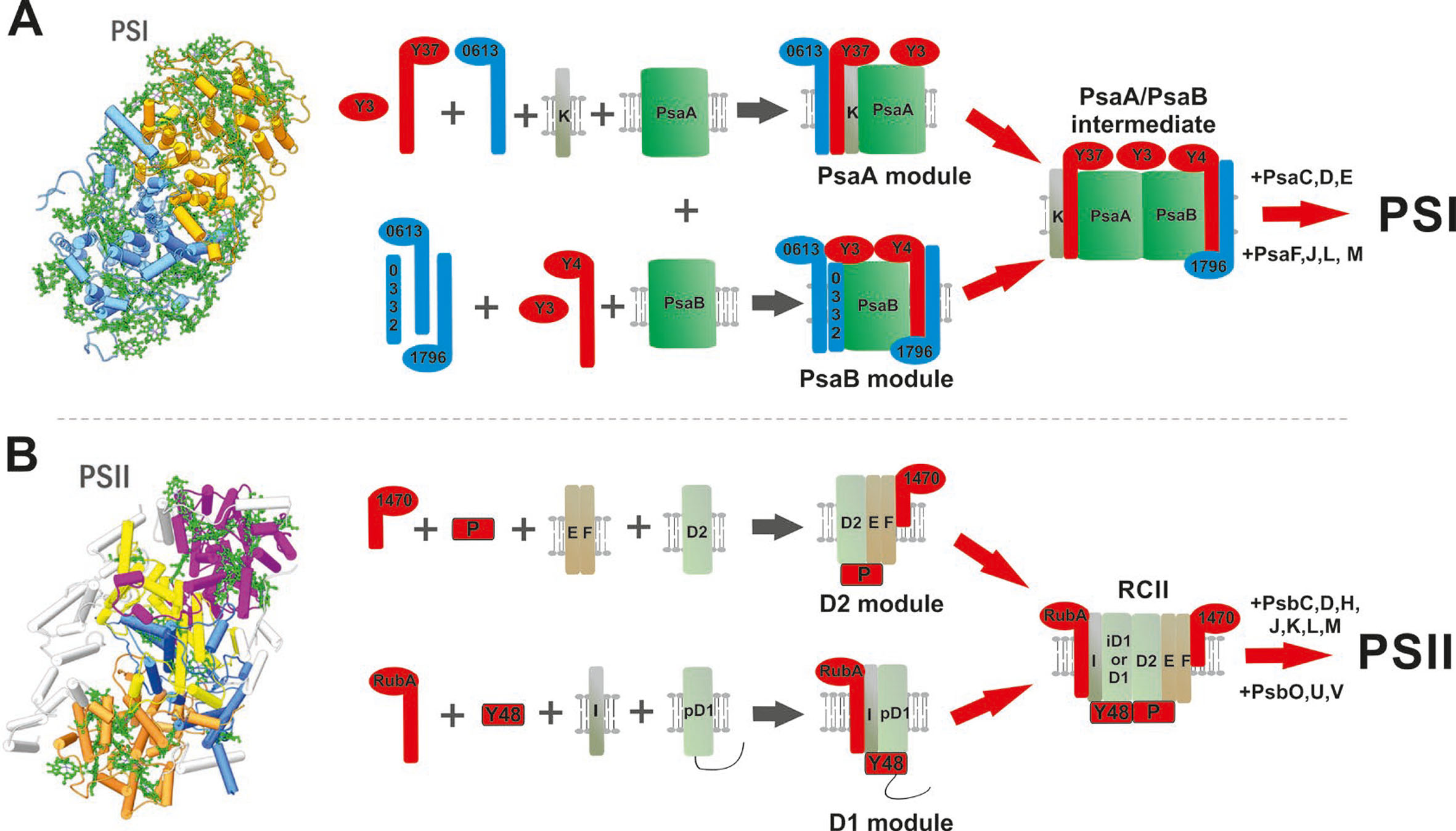Laboratory of Photosynthesis
Josef Komenda`s group
Biogenesis of Photosystem II
Research projects
Early Phase of Photosystem I Biogenesis: an Unexpected Role of the PsaK Subunit and Function of Accessory Protein Factors
Funded by the Grant Agency of the Czech Republic, 2024 - 2026
Principal investigator: Prof. RNDr. Josef Komenda DSc
Photosystem I (PSI) is the key energy-converting machine of oxygenic photosynthesis, containing a large number of protein subunits, pigments and other cofactors. The initial phase ofthe biogenesis of this complex remains largely unknown. The ground-breaking isolation of the individual large protein subunits PsaA and PsaB has only recently allowed us to identify in our laboratory new auxiliary factors involved in PSI formation, while also revealing the unexpected involvement of small PsaK subunit already at the early stage of PSI assembly in the cyanobacterium Synechocystis. The project will elucidate mechanisms by which PsaK and the auxiliary protein factors regulate PSI biogenesis. This will be done by constructing and characterizing specific mutants with missing and tagged PSI subunits and auxiliary factors, and by the isolation, characterization and 3D structure determination of the tagged auxiliary factors bound to PSI complexes. We will also use high-resolution confocal microscopy to localize the fluorescently labeled auxiliary factors in the cell.

Schematic structure (left, view perpendicular to the membrane) and hypothetical scheme for
the early events in biogenesis (right, view parallel with the membrane plane) of PSI (A) in comparison
with PSII (B). Schematic helical arrangement of the main Chl-proteins of PSI (PsaA in blue with antenna helixes
in light blue, and PsaB in ochre with antenna helixes in light ochre) and PSII (D1 in blue, D2 in yellow, CP47
in violet, CP43 in brown). Early steps of PSI include formation of PsaA (consisting of PsaA, the small subunit
PsaK and assembly factors Ycf3, Ycf37 and newly discovered Slr0613) and PsaB (consisting of PsaB and
assembly factors Ycf3, Ycf4 and newly discovered Slr1796, Slr0613 and Ssr0332) assembly modules and their
combination into the PsaA/PsaB assembly intermediate. For comparison, early steps in PSII assembly according
to Knoppová et al. 2022 are also shown (B, right part).

3D model of PsaA/PsaB heterodimer with bound auxiliary factors Ycf37, Slr0613 and
Slr1796 (view parallel with the membrane plane). Models were made using Alphafold program and
document that all three factors most probably contain a transmembrane helix and Ycf37 and Slr0613
also contain the cytoplasmatically exposed domain while Slr1796 has a domain exposed to the lumen.